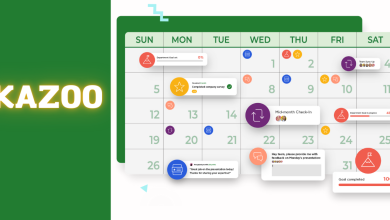5 Ways to Efficiently Improve Employees’ Tech Skills

In the modern era of technological advancements, businesses must keep up with the latest developments and applications. Maintaining pace with emerging technologies and aligning organizational processes with evolving trends allows companies to remain competitive. Companies rely on their employees’ technical knowledge and skills to achieve this.
Nonetheless, developing initiatives for improving technical capacity can be a daunting task. For this purpose, this article lays down five ways businesses can efficiently improve their employees’ technical skills.
1. Identification of Technical Needs
First, businesses must identify and prioritize the relevant technical areas of improvement to sharpen employees’ technical skills. It can be done by analyzing each employee’s workplace performance. However, this is heavily dependent upon the size and nature of your business and may not be practical for everyone. A viable way to go about it would be to circulate an online survey amongst your employees. Or insert the set of questions in their performance appraisal and link it with their individual growth.
The questions can focus on employees’ preferred areas of technical knowledge and skills for learning and increasing their work proficiency. You can use these data to identify essential technical skills listed by the employees and prioritize the most common area for upcoming capacity-building activities.
Nonetheless, it’s crucial to ensure that skill development aligns with organizational goals and helps improve workplace productivity. For instance, most companies leverage data visualisation programs and software to convey critical information to stakeholders. So, upskill your workforce with data proficiency and enable them to capitalize on such software optimally.
2. Establish a Baseline
Before you move on to implementation, it is essential to establish a baseline of your employees’ technical knowledge and skills. For instance, conduct a baseline assessment on data analysis and cybersecurity if they’re marked as critical skills focused on the training session. It will establish employees’ knowledge and familiarity with data analysis, cybersecurity, or other technical areas.
The baseline can be used to develop an efficient training program accordingly. You can conduct this baseline as part of the earlier survey as well. However, separating this is better to attain streamlined information on employees’ preferences in the technical skills they want to enhance and their baseline assessment of a particular technical ability.
3. Form Training Groups
While training the entire employee pool simultaneously can help minimize training costs, it can eventually lead to hurdles down the line. Each employee will grasp and absorb the training sessions differently and at a varying pace. Given this reason, you can use the results of your baseline assessment to segment your employees into training groups based on their existing technical abilities. For instance, categorize employees into three skill groups for a particular technical ability: 1) Employees with no or beginner skills, 2) Employees with moderate skills, and 3) Employees with technical mastery.
The training with the first group can focus on establishing that set of employees with beginner to moderate skills. In contrast, the capacity-building exercise with the second group can focus on enhancing their mastery from a medium to high skill level. Those in the third group can identify advanced areas of learning and support the trainer in developing a training curriculum to maximize their existing mastery.
4. Select Learning Methodology
You can review your previous survey and baseline assessment results to identify learning methodologies suited for a particular technical area for each group. For instance, if a technical skill is essential for only a specific set of employees with varying mastery levels in that area, you can consider individualized training. The individualized learning programs can vary in duration and be implemented using an online course that builds upon the employees’ baseline knowledge and skills.
The individualized learning methodology is more effective in niche and highly technical areas. For technical skills that all employees have identified to be necessary, group training is the optimal mode of implementation. It will ensure that each worker sharpens the relevant technical competency collaboratively. What’s more, employees can help each other navigate the intricacies during the training. While after the training, staff who attained skill mastery can help others with technical queries and issues in that area.
5. Conduct Post-Training Assessment
Assessing the impact of your training is vital to ascertain improvement in employees’ technical abilities. After a training or a capacity-building activity, a post-training assessment or an end-line evaluation of a particular technical ability is crucial to gauge the training’s impact. It is critical in quantifying the improvement in employees’ technical knowledge and skills. You can do so by comparing the results of the pre-training and post-training assessments. Nonetheless, the test or assessment used at both time points should be uniform. It means deploying the same questions and using the same survey methodology in both assessments. This impact assessment would show the quantitative improvement, i.e., percentage change in employees’ technical proficiency and skills after training. These results can be incredibly encouraging for employees and businesses.
Moreover, the impact assessment can also serve as evidence for the effectiveness of your capacity-building approach. Results from the entire training program can showcase multiple areas of advancement and identify the most effective training methodologies. More importantly, you can use these results to identify technical skills with low improvement or poor learning methodologies and update the next training sessions accordingly.
Final Thoughts
Developing your employees’ technical capacity is essential for your business to keep up with the technological advancements of the modern era, your competitors, and your customers. To do this efficiently, you must first conduct a needs-assessment exercise to identify technical skills employees are willing to improve. Next, you can perform a baseline survey to assess your employees’ technical capacity, i.e., knowledge and skills, before the training exercise. Based on these exercises, you can form training groups to segment employees with varying technical abilities and select the most appropriate learning methodology accordingly for each group.
After the capacity-building activity, conduct a thorough assessment and post-training evaluation to ascertain the improvement in your employees’ tech capacity. That’s how you can structure your technical training program and efficiently boost your employees’ tech skills.




